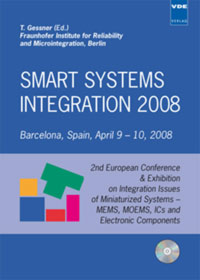COB vs. Flip Chip - A technology and cost comparison based on a real product
Konferenz: Smart Systems Integration 2008 - 2nd European Conference & Exhibition on Integration Issues of Miniaturized Systems - MOMS, MOEMS, ICS and Electronic Components
09.04.2008 - 10.04.2008 in Barcelona, Spain
Tagungsband: Smart Systems Integration 2008
Seiten: 8Sprache: EnglischTyp: PDF
Persönliche VDE-Mitglieder erhalten auf diesen Artikel 10% Rabatt
Autoren:
Kloeser, Joachim (AEMtec GmbH, Berlin, Germany)
Inhalt:
In the production of electronic circuits and modern packages the proportion of bare ICs is increasing dramatically. Reasons like miniaturization and improved electrical performance are sufficiently well-known as trademarks of the bare die assembly. Now however, the cost threshold for the introduction of this assembly technology does not seem to be an obstacle anymore. For example during the assembly of ASICs, the COB technology has successfully been used for years, because of higher flexibility, higher performance and lower costs compared with standard packages. However in the past the flip chip technology always had the reputation of being a “fine but expensive technology”. Now things seem to be changing. Flip chips are increasingly employed for less expensive products as well, so that at the moment the proportion of FC connections in electronic packages is constantly increasing. In the present paper the technologies and costs for COB and flip chip are compared for a real product in detail. Furthermore, aluminium and gold wire bonding are compared regarding cost for the COB version. The costs of the entire assembly chain including all materials and technologies are compared, the results are discussed. These results are also scaled for different production volumes and batch sizes. The optimal technology for different scenarios is derived. Based on the real product the costs for the different process steps of the according technology are standardised and therefore made comparable. The major cost drivers are identified and discussed. Finally the numbers of required production machines are calculated for the different scenarios.


